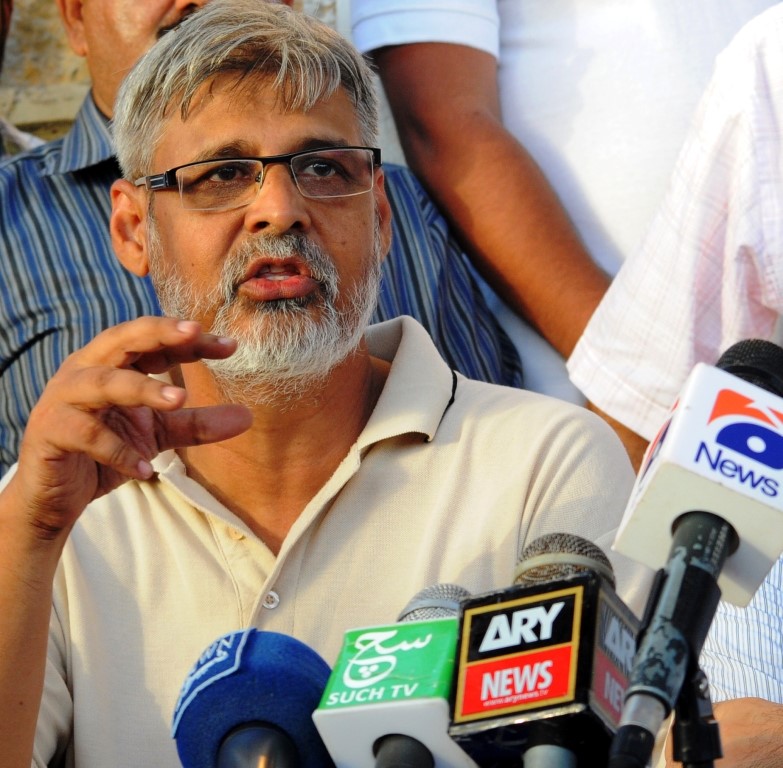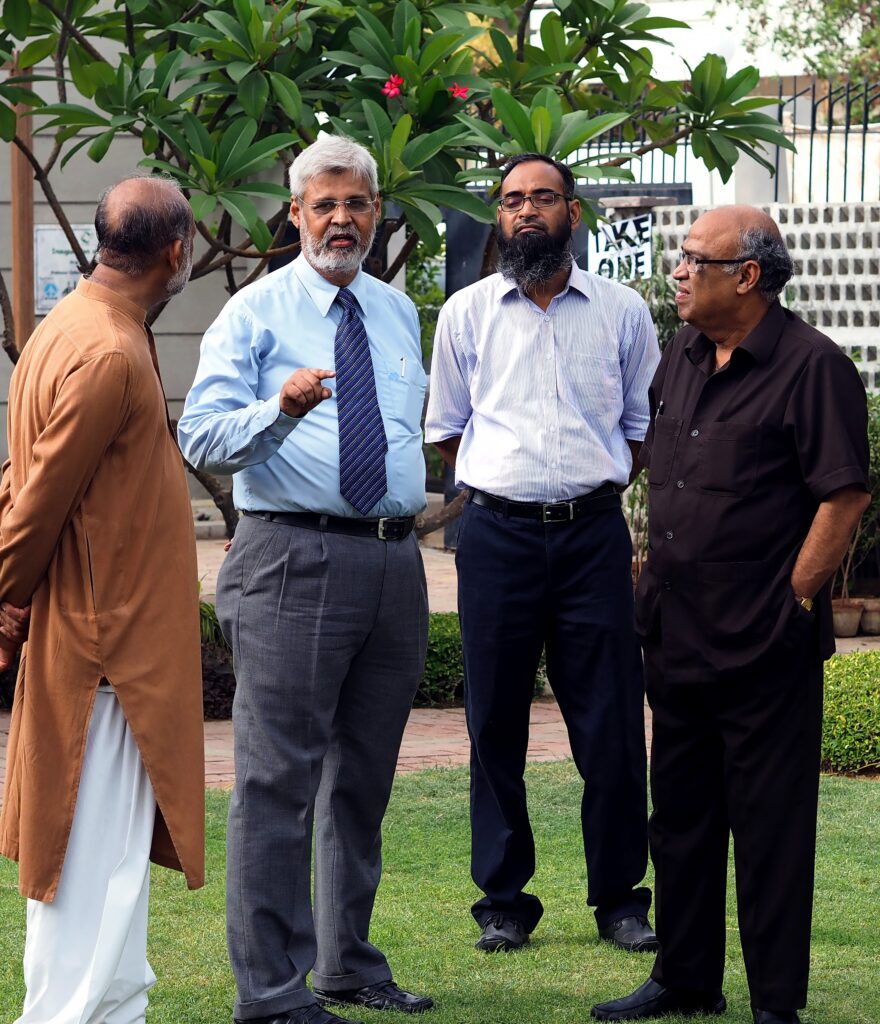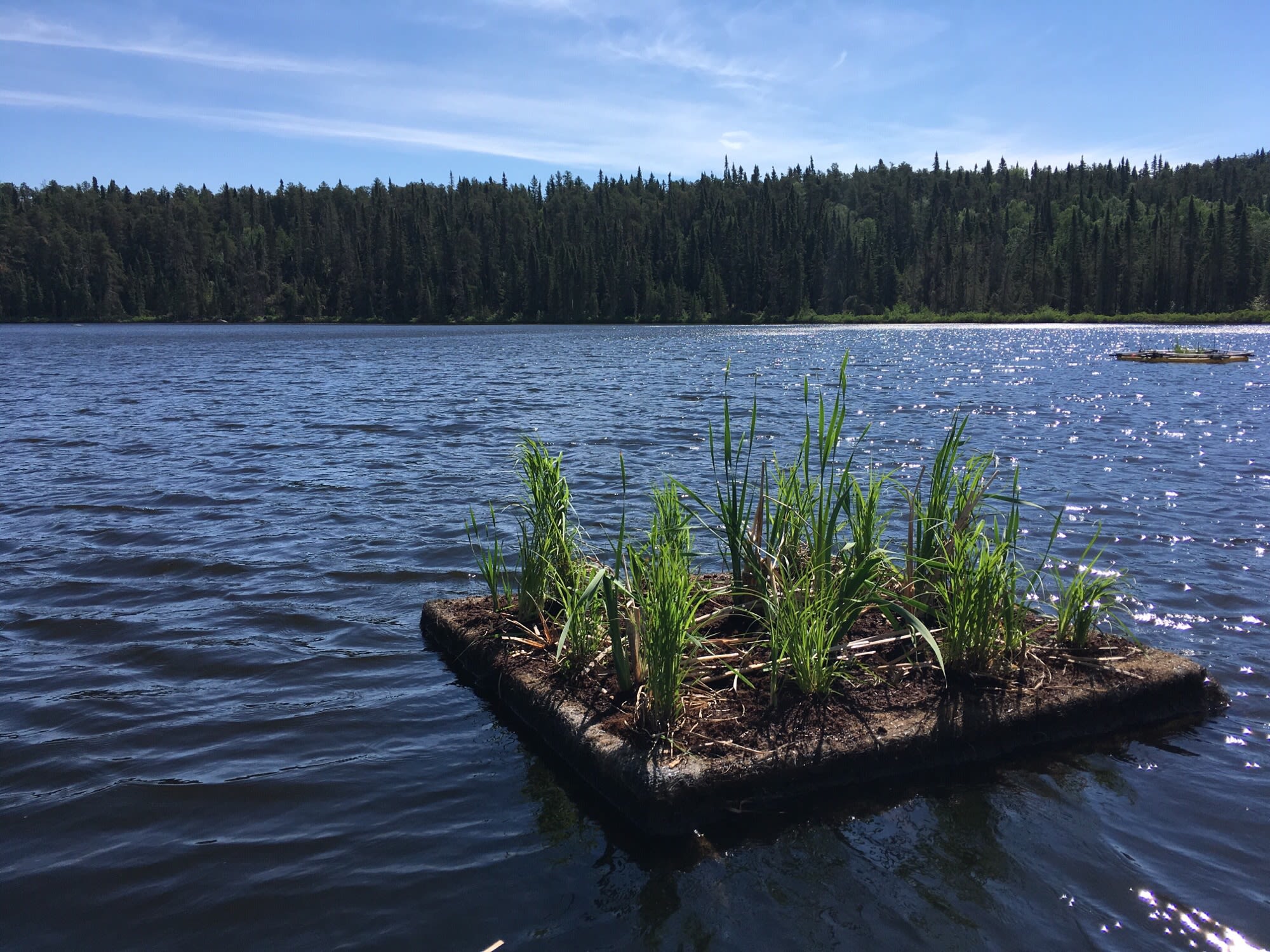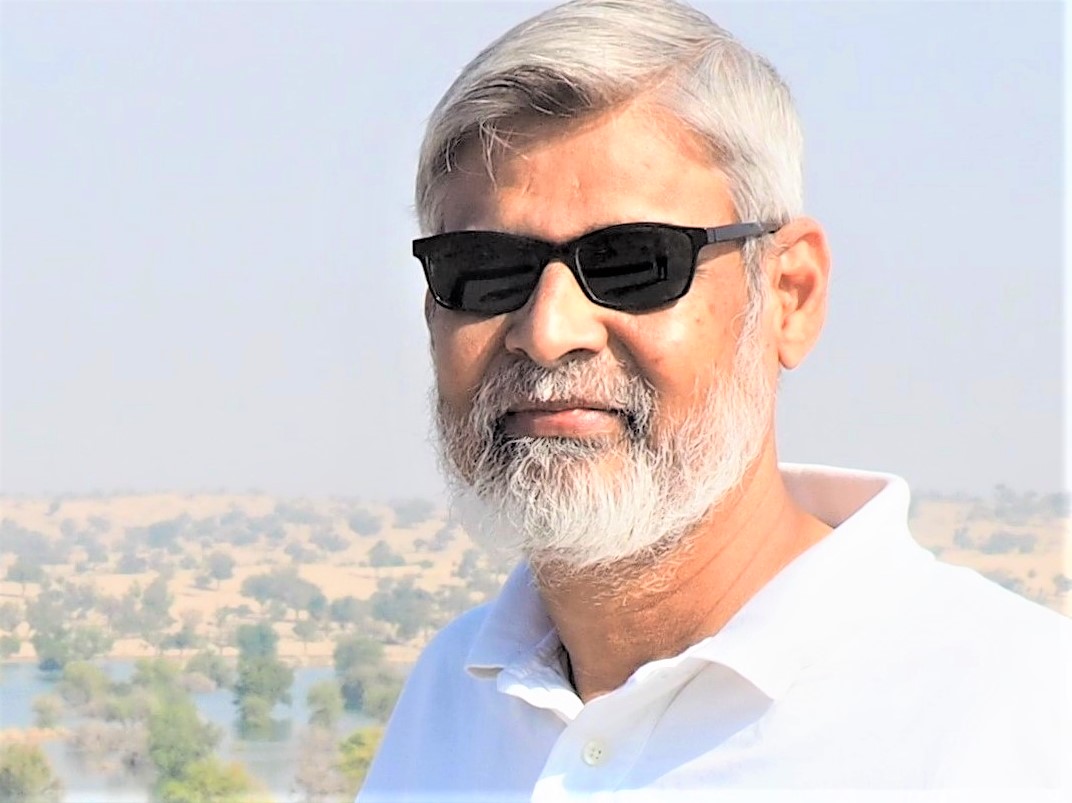Pakistan is the land of high mountains, fertile river valleys, inhospitable desert, and has a long coastline along Sindh and Baluchistan provinces. These eco-regions are the hub to a wide range of flora and fauna. Like the rest of the world, climate change poses enormous threats to the several ecosystems of Pakistan, including but limited to sea-level rise, coral bleaching due to ocean acidification, glacier melt, and drastic changes in weather patterns. In the last two decades, a significant decline has been observed in the population of several species, and many endangered one has gone extinct.
The state of the environment and its proper management is the prerequisite condition for the sustainable development of every country, and Pakistan is no exception. For our special edition on “Ecology”, our Chief Editor Saadeqa Khan has reached out to prominent ecologist Mr. Rafi ul Haq to get an insight into the ecological threats that Pakistan encounters at the moment. Haq had been associated with IUCN Pakistan in various capacities and has vast experience working as an ecologist in the national and international arena.
Below are excerpts of his conversation with Saadeqa Khan.
Saadeqa: Tell us about yourself and how you got to where you are these days? Let us know about the obstacles in your career as an ecologist of international repute?
Haq: I work as a Consultant Ecologist, enjoying my relationship with IUCN as a commission member for ecosystem management (CEM). My career started in 1988, immediately after completing my M.Sc. in Plant Ecology from Karachi University, the engagement was initially as academics and then as a researcher. We were lucky to have well-trained and meritorious senior academics in the Department of Botany, most of them with international exposure. Their presence indeed helped a lot to overcome potential professional difficulties in becoming high achievers. Specifically, the conceptual development in Ecology, Autecology, and Synecology, with a clear understanding of ecology in urban setups.
All credits to my teachers and my parents for their continuous support and encouragement. Specifically, Prof. Dr. Shahid Shaukat, Prof. Dr. Zafar Iqbal, Prof Dr. (Late) M. Ajmal Khan, Vice-Chancellor, University of Karachi, and (Late) Prof. Dr. Abdul Ghaffar, who was then Chairman, Department of Botany, University of Karachi. I must acknowledge the sizeable contributions of my teachers, who inculcated confidence and regular exposer to the latest developments in the field of ecology. Dr. J.D. Ross of Plant Science Laboratories, Reading University, played a booster role in further refining my skills. He engaged me to assist him in his undergraduate and post-graduate classes. I enjoyed my tenure as researcher cum academics.
Regarding obstacles, initially, there was a tough professional saturation followed by a lack of opportunities and financial constraints for an ecologist to survive. It was overcome by practicing the acquired knowledge, articulation in diversified trades helped a lot in adjusting professional niches and simultaneously fulfilling the material needs. In a nutshell, I relatively feel lucky to avail the circumstantial benefits of an emerging enabling environment coupled with my urge to learn and interact with the national and international arena.

Saadeqa: Would you like to tell us about an experience working with IUCN Pakistan or any other organization in which you evaluated results and found most threatening to the ecosystem/ biodiversity in Pakistan?
Haq: There are plenty of such experiences, not restricted to IUCN or any specific organization; it happens everywhere in Pakistan and almost every day.
The root cause is significantly ignorance and is potentially supported by the visibility factors. Here to be precise, I would like to discuss two such cases; the first one is the division of opinion on an ecologically a critical factor is ignorance in respecting the integrity and characteristics of our water bodies, i.e., ignoring the E- flows, transforming the flowing bodies in stagnant reservoirs or even for developing plantations, and withdrawing/degrading the water disregarding the ecosystem requirement. Manchar Lake, where agricultural effluents were allowed in lake water, ultimately resulting in degradation of the ecological composition of Manchar Lake. The affected ecosystem precisely fell in the category of Wetlands.
The other such deviation mainly threatening the urban ecosystem; this relates explicitly to plantation campaigns; We have two defined seasons for this campaigns to run, the spring season starts on the 15th of February and ends on the 15th of April, whereas the second season is Monsoon, starting from 15th of July and ending at 15th of September. This is the month of November; if we check with social media, we may find innumerable reports of the sizeable plantation. This activity in naivety often contributes to failures, contributing negatively to the wellbeing of the ecosystem.
The other essential concomitant of degradation is unawareness/ignorance from the International guidance on alien and invasive species. We often see promontory messages encouraging masses to promote nonnative flora without realizing the growing needs of a species and the follow-up required as post plantation care.
Saadeqa: What is the difference between an ecological niche and a habitat? What are the biggest threats to natural habitat to wildlife, specifically endangered species?
Haq: The ecological niche has been defined as a conceptual boundary, representing the physical and biological requirements of a species or an ecosystem in time and space, whereas the habitat is where the species live.
The species live in association with each other; respecting the needs of the others are termed as coexistence; their presence, if not beneficial, may not disturb others. If the two species struggle for the same resources, they may enter into a situation called competition. This competition results in readjustments of niches; they may compromise and learn to live with each other or may eliminate original inhabitants in case of invasive species.
To make it clear, which reflects the lowest strata of trophic level (Producers), if there could be a change in habitat, natural or manmade, it has a direct impact on the life form of advanced trophic levels. Some of them were threatened by lustful harvest, mainly impacting the population dynamics of that life form, for example, if a set of herbivores is to be fed to the next trophic level, however, if the balance of population somehow gets disturbed, this challenges the existence of other species and ultimately impacting the ecosystem.
A recent example is a reintroduction of wolves in Yellowstone national park to contain the population of probably Antelope (Cervus Canadensis). Some of the species are facing evolutionary changes, like unpredictable changes in physical parameters, seasonal drift, etc., but primarily due to human interference, as use of a pesticide Dichlorophen reached the food chain of vultures, where it caused non-viable egg hatching; ultimately resulting in threats to the vulture population.
Saadeqa: How is ecology linked with climate change? What are the devastating impacts of global warming, air/water pollution, and climate change on different ecosystems in Pakistan?
Haq: Ecology is the study of relationships between physical and biological entities of the systems, whereas climate change tells us the impacts or deviation in physical parameters of the system. Ecology actually helps the resource managers to adapt so that the damages or losses can be contained.
There are a few recent examples from Pakistan; in 2010-11, we had two mega floods, one can recall the social, material, and economic devastations. The other most devastating consequences of climate change were experienced in Karachi in 2015 when an urban heat spell resulted in the death of some 1300 people in a day. There was chaos and insufficient space available in mortuaries to accommodate the dead bodies; the dead were buried in mass graves. Due to unusual low pressure in the Arabian Sea, which persisted for more than 48 hours.
Similar extremes of drought and unexpected wet weather have been reported from Baluchistan and Sindh. Pakistan’s Northern areas face GLOF (Glacial Lake Outfall Burst), formation of Ata Abad lake was another well-known event.

Saadeqa: The recent IPCC report is a warning to global leadership. What do you think; Pakistan could effectively manage environmental security amid a severe climate crisis?
Haq: Yes, it’s a pity that Pakistan’s contribution to the global carbon footprint is less than 1 % (0.8%), but it has been drifting to attain 6th position in the vulnerability list due to climate change. Despite resource limitations and until now, Pakistan played a responsible role in abating the climate crisis, these efforts need to be reciprocated by the larger community.
Pakistan is coping with climate change impacts; crisis management needs resources, which require economic stability. The truth is that most of the financial decisions were linked to political priorities. This is very unfortunate to see the response; this is unfortunate to see the response to the big economy to the climate crisis.
There seems no seriousness on the issue; weaker economies, instead of awarding relaxation, were seen to be placed in stress mode by putting them on some restricted lists. I wonder, if the attitude remains persistent, the imminent ultimate is the mass extinction, which this globe has experienced 5 times earlier and is leading to the 6th mass extinction; if learned from our experience, this could be averted, the only solution is inclusiveness and mutual respect from an individual to an international level.
Saadeqa: A recent report of the UN shows that Pakistan could run out of clean water by 2025. What are projects under work/ under consideration by IUCN Pakistan to cope with this situation? Do you think that Floating Wetland Treatments (FTWs) developed by Dr. M Afzal could be a game-changer considering water scarcity?
Haq: Some 225 water bodies of varying sizes spread all over Pakistan; they collectively represent some 9-10% of the national surface area. Not all of these bodies experience pollution; however, a sizeable area in the south is experiencing odd conditions.
The idea of floating wetlands is quite exciting; they can be scaled up to the sites needed. To declare it as a game-changer could be too early; the reason is that floating structures here carry floating vegetation having their roots to absorb obnoxious material. This apparently has a cleaning role on one side. I believe the floating raft would be recharged after completing its shelf life, i. e. it would have a provision of periodic replacements of grown vegetation.
I fear there is likely to be a compromise in the wetland’s DO (dissolve oxygen); at least 4% DO is required to support other sub-surface life forms in the wetlands. The sunlight would be obstructed by the floating structure, these radiations help in the photosynthetic activities of the autotrophs in the subsurface of the water body. I wonder if the project has the provision to address the compromise?
Saadeqa: Last year, I interviewed Dr. Shoaib Kiani from the Marine science department, Karachi University. He updated me with some horrible facts and figures about the extinction of Green and Olive Ridley Turtles, Dolphins, etc., along the coastline of Sindh and Baluchistan. What efforts are taken for their preservation?
Haq: Infect, ignorance and human lust has created a mess; It was fortunate for me to get interacted with Dr. Nicolas Pilcher is the chair of the turtle group in SSC (Species Survival Commission), the IUCN commission famous for bringing out Red data book of Threaten Species, earlier there was a study commissioned by IUCN Pakistan to have an authentic update. The study was conducted by (Late) Dr. Syed Ali Ghalib, a renowned wildlife expert ex-Director Zoological Survey of Pakistan.

The report has some interesting findings. Green turtles and Olive ridley were initially reported in Karachi coast (Sandspit) for nesting, but after some time, probably after the Tasman sprit oil spill, calling of Olive ridley was stopped, later on; by virtue of this study, it was found that Olive ridley has changed its calling area for nesting and it was found calling in the eastern part of Ormara.
Later on, as a routine activity, a small population of Leatherback turtles was also found, calling for nesting on the western coast of Baluchistan (Darran). Dolphins can still be seen in the Indus delta but were drifted away due to human activities; this can be taken as niche adjustment. The situation is concerning but not horrific; it needs attention but not to be sensational.
Saadeqa: The coastline of Pakistan is under severe threats due to increasing industrial activities, coal power plants, etc. What steps are essential for the conservation of marine life, migratory birds, and localities nearby?
Haq: Pakistan has a coastline of 990 Kms; until now, there are three functional coal-fired power stations, and one more is to be added, so making a total of 4 with a concentric spread along the eastern and western coastline of Karachi. The western ones are located in Baluchistan (Hub), and the eastern ones are in the Port Qasim area.
This coastline is fortunately blessed with winds blowing from the southwest with a range of 3-33 knots per hour; the other supporting factor is the sparse human habitation in the vicinity, the establishment of such facilities is usually looked at by developing air dispersion models. Firstly, the blown southwestern air is directed towards the land, which has a very dispersed population.
The air dispersion models were critically analyzed by the respective EPAs, and based on the strategic demand of maintaining an energy mix, these generation units were allowed. Another encouraging factor was reducing dependency on imported fuel by consuming locally extracted coal from Thar.
Saadeqa: It is no longer a riddle that environmental degradation drains Pakistan’s economy and causes massive unemployment due to a slight decline in agriculture practices, fisheries, and tourism. What should be the long-term goals/ necessary steps to better cope with these looming challenges?
Haq: A well-integrated and inclusive approach, as it has been proved recently by dealing with locust control, which was a transboundary issue, but it has been taken seriously by all stakeholders, this includes a range of expertise and skills.
Pakistan, which has an agrarian economy, has to look for a well-coordinated and cohesive approach to deal with climate resilience. Effective use of ecological tools would significantly be helpful for sustainable solutions.
Saadeqa: Do you think our educational/ research institutions play their role in combatting the climate crisis? Do we reasonably utilize modern technologies/ software to figure out ecological changes?
Haq: Yes, potentially they have a role, but this requires an instant response; if we stick to stereotypes and obsolete knowledge-based learning systems, it would be challenging to cope with the demands. I am afraid the synchronization, inclusiveness, and integration of interdisciplinary and intradisciplinary topics are not up to the mark. Those conversant with the software are not adequately equipped with other dynamics of the subject. We are still lagging behind in this field.

Saadeqa Khan is the founder, CEO, & Editor-in-Chief of Scientia Pakistan. She’s a member of the Oxford Climate Journalism Network (Second Cohort) and NASW. Saadeqa is a fellow of NPF Washington, The Falling Walls Foundation, and the Science Journalism Forum. Saadeqa has won several international journalism grants and awards for her reports.

